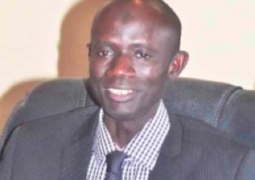The saga of the ‘marakass’ in The Gambia
This is an academic text which has heft literally and metaphorically in the sense that it is weighty and has a profound academic slant which is to be expected coming from a sturdy academic like Marloes Janson, and the venerable Cambridge University Press. Dr Janson lectures at School of Oriental and African Studies, University of London, and she has done decades-long research on religious phenomenon in the Gambia, Senegal, and Nigeria.
In this tome, Dr Janson tackles the rise, spread and values of the Tablight Jama’at, who in The Gambia we call ‘marakas’: young Muslims who wear short-legged trousers, grow beards, wear the hijab, and go around to spread their version of Islam. For Dr Janson, they embody youthful exuberance as well as religious revivalism. Most of them are youths, and the movement itself, which grew out of India in the 1930s, has a revivalist and reformist agenda, ( p.3).
The author uses biographical sketches of five anonymous young Gambians to trace the spread, ideas and ‘contradictions’ the members of the group confront daily. Basically, the contradictions, according to the author, concerns the attempt to try to spread a stricter version of Islam than the one they were born in, and how their elders see them as upstarts. And also the fact that they want a form of the religion strictly devoid of any traditional inputs, in other words, they do not encourage syncretism. Yet, according to the author the Tablight Jama’at or Marakas see themselves as missionaries of the religion.
How they see themselves and how outsiders see them notwithstanding, it is clear from the author’s argument that the movement has been around for some time, in that it may have started over 80 years ago in South Asia, yet its followers are largely young. This brings in the question of motivation: is it total piety or escapism, or a combination of the two? In chapter 9, the author tries to tackle this question: is the desire to escape from the clutches of poverty, unemployment, elderly control and so on part of the appeal which attracts people into the folds of the Tablight? The author thinks not, she contends that for the youth she has spoken to, the movement offers profoundly critical religious questions of ‘how to be a good Muslim’ (p.257).
As stated above, this is not an easy book; it is highly academic and thoroughly analysed and interpreted. It will appeal to the students of religious studies, anthropology, youth studies, even Gambian history. It is therefore an omnibus volume which can be useful for a variety of users. It is highly recommended.
Available at Timbooktoo, tel 4494345.




